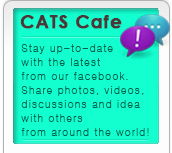Developmental Stages 
Home > Service Categories > Assessment
Important Milestones by the end of 2 year (24 months)
Babies develop at their own pace, so it's impossible to tell exactly when your child will learn a given skill. The developmental milestones listed below will give you a general idea of the changes you can expect, but don’t be alarmed if your own baby’s development takes a slightly deferent course.
Social
Imitates behavior of others, especially adults and older children
More aware of herself as separate from others
More excited about company of other children
Emotional
Demonstrates increasing independence
Begins to show defiant behavior
Separation anxiety increases toward midyear then fades
Cognitive
Finds objects even when hidden under two or three covers
Begins to sort by shapes and colors
Begins make-believe play
Language
Points to object or picture when it’s named for him
Recognizes names of familiar people, objects, and body parts
Says several single words (by 15 to 18 months)
Uses simple phrases (by 18 to 24 months)
Uses 2- to 4-word sentences
Follows simple instructions
Repeats words overheard in conversation
Movement
Walk alone
Pulls toys behind her while walking
Carries large toy or several toys while walking
Begins to run
Stands on tiptoe
Kicks a ball
Climbs onto and down from furniture unassisted
Walks up and down stairs holding on to support
Hand and finger skills
Scribbles on his or her own
Turns over container to pour out contents
Builds tower of four blocks or more
Might use one hand more often than the other
Developmental Health Watch
Alert your child’s doctor or nurse if your child displays any of the following signs of possible developmental delay for this age range.
Cannot walk by 18 months
Fails to develop a mature heel-toe walking pattern after several months of walking, or walks only on his toes
Does not speak at least 15 words
Does not use two-word sentences by age 2
By 15 months, does not seem to know the function of common household objects (brush, telephone, bell, fork, spoon)
Does not imitate actions or words by the end of this period
Does not follow simple instructions by age 2
Cannot push a shelled toy by age 2
Experiences a dramatic loss of skills he or she once had
From www.cdc.gov/actearly
From CARING FOR YOUR BABY AND YOUNG CHILD: BIRTH TO AGE 5 by Steven Shelov, Robert E. Hannermann, © 1991, 1993, 1998, 2004 by the American Academy of Pediatrics. Used by permission of Bantam Books, a division of Random House, Inc.












